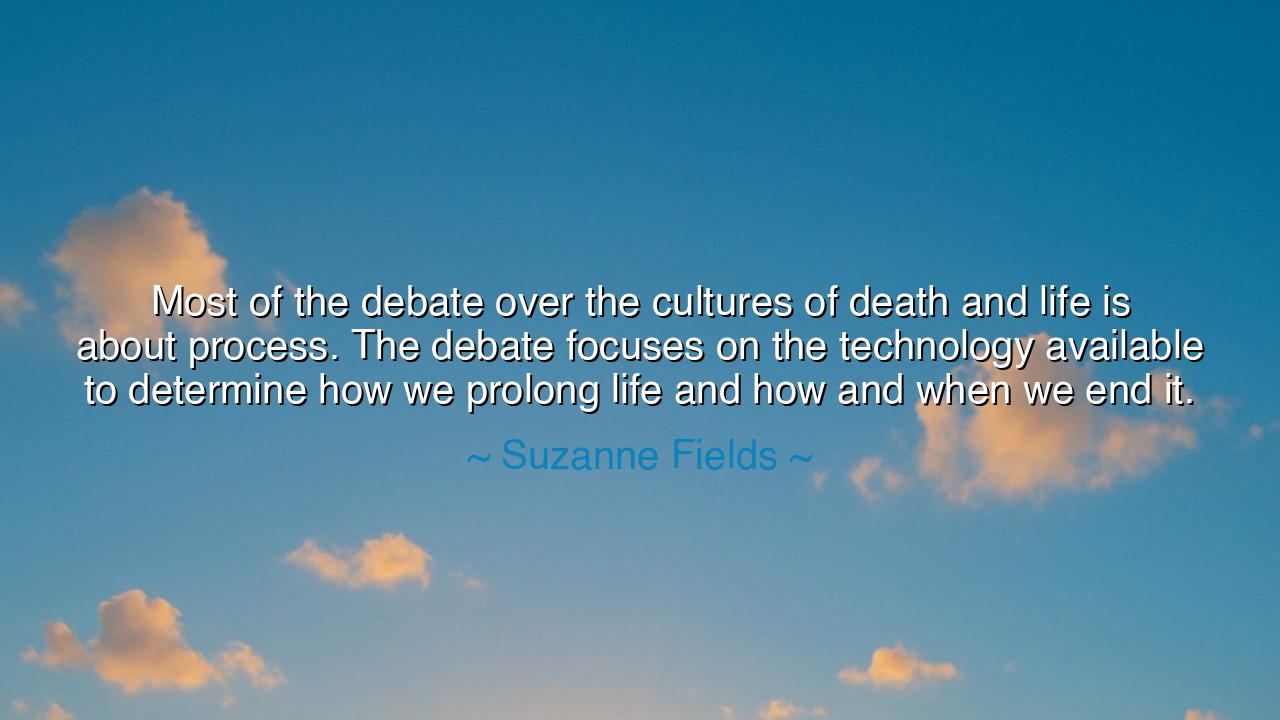
Most of the debate over the cultures of death and life is about
Most of the debate over the cultures of death and life is about process. The debate focuses on the technology available to determine how we prolong life and how and when we end it.






Hear the solemn voice of Suzanne Fields, who spoke of the weightiest matters of the human journey: “Most of the debate over the cultures of death and life is about process. The debate focuses on the technology available to determine how we prolong life and how and when we end it.” In her words lies not a passing thought, but a meditation upon the very boundaries of existence—the line between the living and the dying, the dawn and the dusk of our days.
She speaks of the cultures of death and life, not as mere abstractions, but as the opposing forces that every society must wrestle with. To embrace life is to honor its sanctity, to cling to the miracle of breath and heartbeat. To face death is to acknowledge its inevitability, to decide how we confront it with dignity. Fields teaches us that much of this struggle is not about belief alone, but about process—the methods, choices, and practices that guide how we extend or end existence. And central to this process is technology, the tool that can both preserve and prolong, or hasten and conclude.
For consider the machines of modern medicine: respirators that breathe when lungs fail, dialysis that purifies blood when kidneys collapse, drugs that steady hearts when they falter. These are marvels undreamed of by our ancestors, yet they come with questions that pierce the soul. At what point does prolonging life become prolonging suffering? When does the duty to heal become the refusal to let go? It is here, in this tension, that the debate arises—not only among physicians and lawmakers, but in every family that has stood by the bedside of a loved one.
History bears witness to this struggle. In the case of Karen Ann Quinlan in 1975, a young woman fell into a coma, sustained by machines though her mind and will seemed gone. Her parents sought to remove the respirator, believing that natural death should come, but the courts resisted, bound by fear of ending life prematurely. In time, she continued breathing on her own, yet remained in a persistent vegetative state for years. This story, and others like it, ignited fierce debates about the process of death, about who has the right to decide, and about the role of technology in sustaining life when nature would have already ended it.
Fields’ words echo through such examples: the clash between the desire to preserve and the recognition of limits, the struggle to balance compassion with conscience. It is not death itself that is debated—death is certain for all—it is how we arrive there, and what role the instruments of science should play in that sacred journey. Thus, the process becomes the battlefield, where law, morality, and faith contend.
Yet her teaching is not one of despair, but of wisdom. She reminds us that as technology grows more powerful, so too must our humanity grow deeper. Machines can prolong the body, but only human love can discern whether that prolonging honors or diminishes the person. The debate over life and death cannot be left to wires and circuits; it must be guided by values, mercy, and reverence for the mystery of existence.
The lesson is clear: we must not shrink from these questions, for they come to every generation. Learn to speak openly with loved ones about your wishes, so that decisions are not left in silence. Approach the marvels of technology with gratitude, but also with caution, lest we allow it to dictate what only the heart and conscience can decide. And above all, remember that both life and death are sacred passages—treat them with awe, with humility, and with compassion. In doing so, we honor not only the dying, but the living who remain, and the eternal truth that though our days are numbered, their meaning lies in how we walk them.






AAdministratorAdministrator
Welcome, honored guests. Please leave a comment, we will respond soon